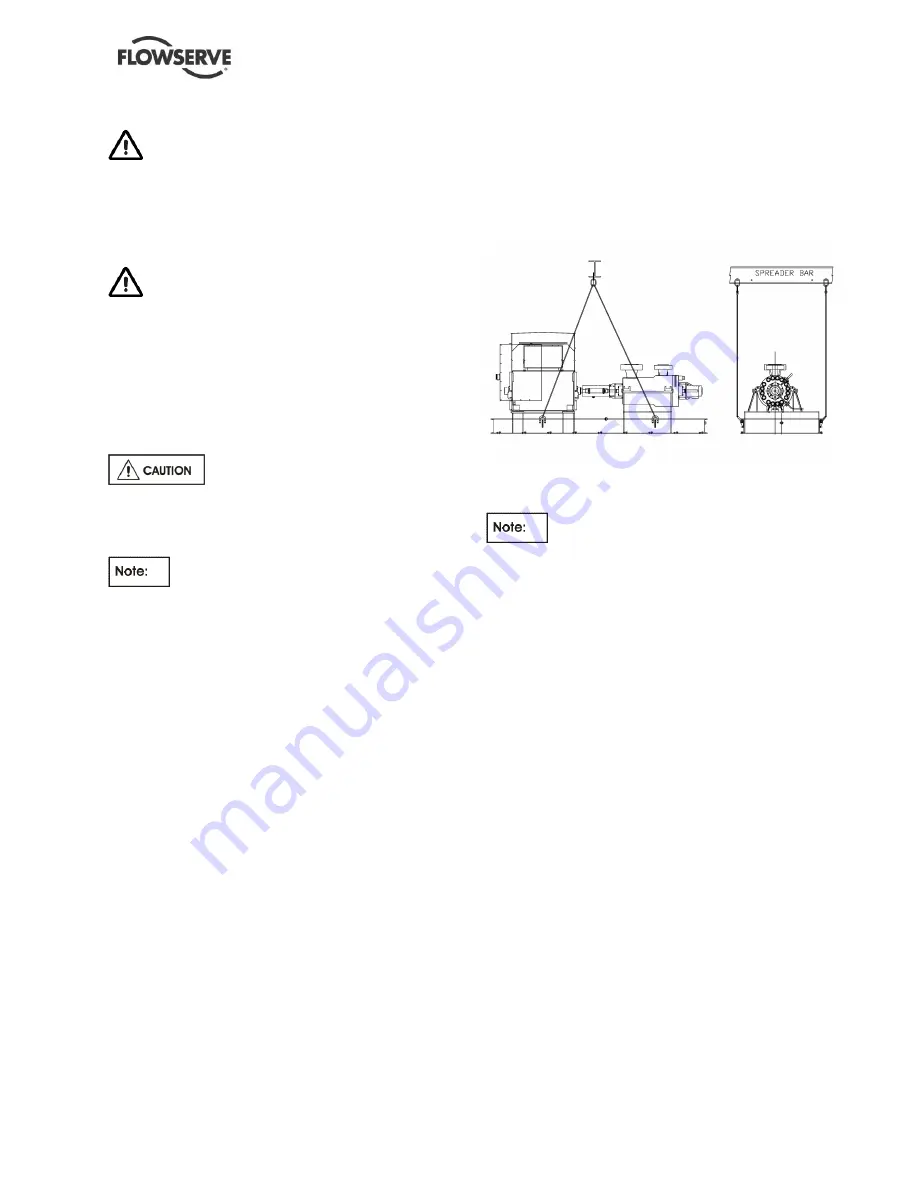
WIK USER INSTRUCTIONS ENGLISH BO2662 5/09
Page 10 of 76
2.3
Lifting
EQUIPMENT CAPACITY
Make sure that any equipment used to lift the pump
or any other of its components is capable of
supporting the total weight encountered. Make sure
that all parts are properly rigged before attempting to
lift.
TRAINED PERSONNEL
A crane must be used for all pump sets in excess of
25 kg (55 lb.). Fully trained personnel must carry out
lifting, in accordance with local regulations. The
driver and pump weights are recorded on their
respective nameplates or massplates.
For weights of pump, driver, and cradle and
soleplates, see the Outline Drawing Section 8.
Parts can be damaged using the end
of the pump shaft as lifting points. Avoid lifting the
pump by nozzles or drip pockets; they are not
stressed for the load.
Whenever possible, rig spreader bars to
prevent cables from cutting into equipment, thus
avoiding any need to remove equipment to avoid
damage. To lift the complete pump or the casing off
the baseplate, place a single nylon lifting strap
around the casing at the center of gravity.
2.3.1 Baseplate-mounted pump and driver
The four cardinal points for lifting the combined
weight of baseplate and mounted pump and driver
(or just the baseplate with pump) are located
towards the ends of the baseplate. Their positions
are physically defined by pipes that act as holders
for lifting bars or lugs that afford use of clevises.
These pipes or lugs are welded to the baseplate
structure (see the Outline in 8). To set up for lifting
the baseplate, proceed according to the following
instructions.
1) Slide 75 mm (3 in.) bars which are long enough
to extend well past sides of baseplate into pipes
in baseplate or attach clevises to lifting lugs at
each end of baseplate, whichever is applicable.
2) Attach cables to 75 mm (3 in.) bars or clevises in
lugs at the four cardinal points.
3) Attach hoist to apparatus, take up slack in
cables and check to see that cables do not cut
into pump, driver, or attached equipment. If it
appears that cable will cut into an item, stop
hoist, and protect item with wood blocks, if
possible; otherwise remove the item. See
Figure 2-1
: Baseplate mounted Pump & Driver
Lifting.
4) Insure that hoist is over center of gravity of
baseplate and that cables are not cutting into
any item.
5) Hoist unit and dispose of it.
Figure 2- 1: Baseplate mounted Pump & Driver
Lifting
After the baseplate has been secured in
position, verify that pump and equipment are
undamaged and that items which had been removed
for lifting the baseplate have been reinstalled (see
section 4.6.2).
2.3.2 Soleplate-mounted barrel pump
There are two sets of four cardinal points that can be
used to lift the combined weight of barrel pump,
cradle and soleplates. Their positions are physically
defined by holes in each corner of the cradle and by
holes in each pump foot. Complete the set of
instructions below (step 1 or step 2) that is
applicable to your circumstance.
1) When using apparatus (see section 2.3) and
four cardinal points of cradle to lift combined
weight or to lift just pump and cradle:
a) Install clevis in hole at each corner of cradle
b) Attach chain (or cable) to each clevis
c) Attach hoist to apparatus and take up slack
d) Verify that cables will not cut into pump,
lagging, piping, panels, etc.
e) Establish that hoist is over center of gravity
f) Hoist unit and dispose of it.
2) When using four cardinal points of pump, to lift
combined weight, pump and cradle, or just
pump:
a) Remove lagging (if installed) exposing pump
feet
b) Install clevis in hole in each pump
c) Attach hoist to cables and take up slack











































